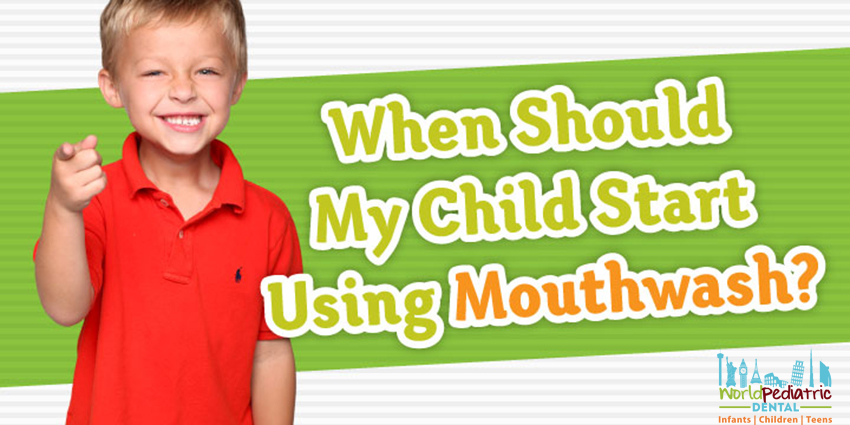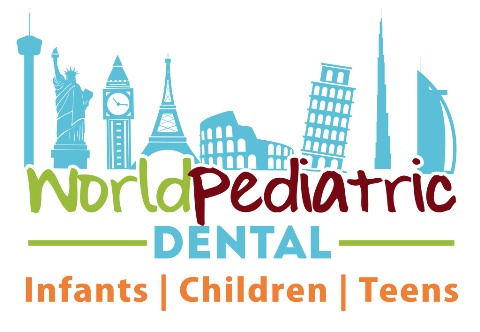Active children always seem to be injuring themselves in one way or another. Most of the time, the injury is minor, like a bruise or a scrape. However, sometimes the child needs to see a doctor or a dentist, such as in the case of a broken or loose tooth. Pediatric dentists are especially trained in the management and case of tooth trauma on young teeth. Here is a brief guideline offered by the American Academy of Pediatric Dentistry of the types of trauma children’s teeth can incur, and how you as a parent can help minimize the damage and long term effects. Knocked Out Tooth If a child’s tooth becomes knocked out, the sooner you contact your Pediatric dentist, the better. Quick action can lessen a child’s discomfort, prevent infection, and perhaps save the tooth. Call us even if the injury occurs after regular dental office hours. For baby teeth, rinse the child’s mouth out with water and apply a cold compress to reduce swelling. Do not spend time looking for the tooth, as baby teeth cannot be replanted. For permanent teeth, find the tooth and gentlyrinse it in cold water. DO NOT scrub the tooth or use soap or let it dry out outside the mouth. Handling it only by the crown (don’t touch the root surface), replace the tooth in the socket and have the child hold it there in place with a clean washcloth or gauze as you travel to the dentist. DO NOT place the tooth in water; if you need to carry the tooth, put it into a container with...
 Managing your children’s oral health involves a daily reigeme of eating healthy, brushing and flossing to help stop bacteria from building up in the mouth and to stop cavities from forming, which is the ultimate goal. At World Pediatric Dental we strive to do everything we can as your children’s dentist to prevent tooth decay from forming in your child’s mouth. We get asked by parents the right toothbrush, toothpaste and floss to use for their children, but not many ask about mouthwash. (If you have not asked us which toothbrush/toothpaste/floss are best for your child ask us the next time you are in our office! Those three things are still the most important tools to maintaining proper oral hygiene for your kids.) Along with brushing and flossing, mouthwash can help keep the mouth healthy, fresh and free of bacteria, but is mouthwash safe for your kids? If your child is under 6 years of age the American Dental Association recommends that your child wait to use mouthwash. The reason for this is children under 6 might have a problem remembering to only gargle the mouthwash and not swallow it. A good way to see if your child is ready to use mouthwash is have them put water in their mouth, swish it around and then spit. If they are able to do this then they may be ready to use mouthwash. When your child is ready to use mouthwash make sure to get a kid friendly product, one designed specifically for children. The reason for this is because adult mouthwash contains alcohol and is more harmful...
Managing your children’s oral health involves a daily reigeme of eating healthy, brushing and flossing to help stop bacteria from building up in the mouth and to stop cavities from forming, which is the ultimate goal. At World Pediatric Dental we strive to do everything we can as your children’s dentist to prevent tooth decay from forming in your child’s mouth. We get asked by parents the right toothbrush, toothpaste and floss to use for their children, but not many ask about mouthwash. (If you have not asked us which toothbrush/toothpaste/floss are best for your child ask us the next time you are in our office! Those three things are still the most important tools to maintaining proper oral hygiene for your kids.) Along with brushing and flossing, mouthwash can help keep the mouth healthy, fresh and free of bacteria, but is mouthwash safe for your kids? If your child is under 6 years of age the American Dental Association recommends that your child wait to use mouthwash. The reason for this is children under 6 might have a problem remembering to only gargle the mouthwash and not swallow it. A good way to see if your child is ready to use mouthwash is have them put water in their mouth, swish it around and then spit. If they are able to do this then they may be ready to use mouthwash. When your child is ready to use mouthwash make sure to get a kid friendly product, one designed specifically for children. The reason for this is because adult mouthwash contains alcohol and is more harmful...
 PEDIATRIC DENTISTS HELP MAKE YOUR CHILD FEEL SAFE Taking care of a child’s dental needs is very different than those of an adult. Our pediatric dentists at World Pediatric Dental understand this and with their skill and training are very successful in helping your children both relax and feel comfortable while also offering the best dental care for your kids in San Antonio. If you live in Stone Oak, Dominion, Schertz, Helotes and the surrounding areas of San Antonio, your child can get the dental work they need with several kinds of dental procedures done by our pediatric dentists. In some cases the best way to restore your little one’s smile is with a baby tooth crown. Baby teeth crowns are readily available for placement in a single visit and come in a variety of materials. IF YOUR CHILD NEEDS CROWNS, PEDIATRIC DENTISTS OFFER CHOICES Stainless Steel Crowns When a cavity is not found early, decay can wither away and destroy such a large amount of your child’s tooth that there isn’t enough left to where a filling would work. That is where a stainless steel crown comes in. A stainless steel crown both saves your child’s tooth and also prevents pain and possible infection. Stainless steel crowns also work well in children because they are extremely durable making them the perfect choice. A crown serves to keep the tooth and root connected until the tooth falls out naturally. When a Stainless Steel Crown is Best A tooth that has broken and is too decayed for a filling. To stop a tooth from...
PEDIATRIC DENTISTS HELP MAKE YOUR CHILD FEEL SAFE Taking care of a child’s dental needs is very different than those of an adult. Our pediatric dentists at World Pediatric Dental understand this and with their skill and training are very successful in helping your children both relax and feel comfortable while also offering the best dental care for your kids in San Antonio. If you live in Stone Oak, Dominion, Schertz, Helotes and the surrounding areas of San Antonio, your child can get the dental work they need with several kinds of dental procedures done by our pediatric dentists. In some cases the best way to restore your little one’s smile is with a baby tooth crown. Baby teeth crowns are readily available for placement in a single visit and come in a variety of materials. IF YOUR CHILD NEEDS CROWNS, PEDIATRIC DENTISTS OFFER CHOICES Stainless Steel Crowns When a cavity is not found early, decay can wither away and destroy such a large amount of your child’s tooth that there isn’t enough left to where a filling would work. That is where a stainless steel crown comes in. A stainless steel crown both saves your child’s tooth and also prevents pain and possible infection. Stainless steel crowns also work well in children because they are extremely durable making them the perfect choice. A crown serves to keep the tooth and root connected until the tooth falls out naturally. When a Stainless Steel Crown is Best A tooth that has broken and is too decayed for a filling. To stop a tooth from...
 Once cavities form it is time to come in and see your pediatric dentist because cavities that do not get treated can result in significant pain for your child, loss of teeth and even the spread of infection. The great news is you can prevent most cavities from ever forming with good dental care, regular visits to your kids dentist and with fluoride. Throughout this blog post I will go into more detail about how through the use of fluoride you can help maintain strong and healthy teeth for your children. What is fluoride and why is it important? Fluoride is a natural mineral that you can find in all water sources, including the oceans. Fluoride, along with proper dental care with your kids dentist, can prevent cavities in your child’s mouth. What the fluoride does is help to protect the tooth enamel from the acid attacks that are the main cause of cavities. It also helps repair and heal weak enamel BEFORE cavities form! As you can see already fluoride is a very important tool for a proper dental hygiene. So fluoride is good, but what is the best way to get it? We can get fluoride for our teeth in two ways: when we swallow it and when it is put onto the surface of the tooth. To help stop cavities from forming, it is recommended to get a bit from both sources. Just remember that more fluoride DOES NOT mean better! Pediatric Dentists use the word “optimal” to mean “just the right amount.” When you see your pediatric dentist talk it over with him...
Once cavities form it is time to come in and see your pediatric dentist because cavities that do not get treated can result in significant pain for your child, loss of teeth and even the spread of infection. The great news is you can prevent most cavities from ever forming with good dental care, regular visits to your kids dentist and with fluoride. Throughout this blog post I will go into more detail about how through the use of fluoride you can help maintain strong and healthy teeth for your children. What is fluoride and why is it important? Fluoride is a natural mineral that you can find in all water sources, including the oceans. Fluoride, along with proper dental care with your kids dentist, can prevent cavities in your child’s mouth. What the fluoride does is help to protect the tooth enamel from the acid attacks that are the main cause of cavities. It also helps repair and heal weak enamel BEFORE cavities form! As you can see already fluoride is a very important tool for a proper dental hygiene. So fluoride is good, but what is the best way to get it? We can get fluoride for our teeth in two ways: when we swallow it and when it is put onto the surface of the tooth. To help stop cavities from forming, it is recommended to get a bit from both sources. Just remember that more fluoride DOES NOT mean better! Pediatric Dentists use the word “optimal” to mean “just the right amount.” When you see your pediatric dentist talk it over with him...
 What is a dental sealant? A dental sealant is a special, plastic coating that is applied to the tooth to protect it from decay. When teeth are treated with sealants, they are less likely to get cavities. Sealants can be applied quickly and painlessly. This is one of the main reasons your pediatric dentist recommends sealants for your child. What causes tooth decay? Teeth are covered with a sticky film of bacteria called plaque. This bacteria changes sugar into harmful acids that attack the hard layer on teeth called enamel. Over time, these attacks may break down the enamel and cause tooth decay, or cavities. Tooth decay often occurs on the chewing surfaces of the back teeth. These surfaces have pits and grooves that trap plaque and bits of food. The pits and grooves are hard to keep clean because bristles cannot reach into them. That is how decay starts in the pits and grooves and a cavity forms. Even a toothbrush bristle is too big to to reach inside a groove in the tooth (magnified). How do sealants work? A dental sealant is a plastic material applied to the chewing surfaces of the back teeth. The resin flows into the pits and grooves in the teeth. The sealants form a barrier, protecting enamel by sealing out food and plaque. How are sealants applied? It takes only a few minutes to seal each tooth. The chewing surfaces are cleaned to make it easier for the sealant to stick to the tooth. Then the sealant is applied to the chewing surface, where it...
What is a dental sealant? A dental sealant is a special, plastic coating that is applied to the tooth to protect it from decay. When teeth are treated with sealants, they are less likely to get cavities. Sealants can be applied quickly and painlessly. This is one of the main reasons your pediatric dentist recommends sealants for your child. What causes tooth decay? Teeth are covered with a sticky film of bacteria called plaque. This bacteria changes sugar into harmful acids that attack the hard layer on teeth called enamel. Over time, these attacks may break down the enamel and cause tooth decay, or cavities. Tooth decay often occurs on the chewing surfaces of the back teeth. These surfaces have pits and grooves that trap plaque and bits of food. The pits and grooves are hard to keep clean because bristles cannot reach into them. That is how decay starts in the pits and grooves and a cavity forms. Even a toothbrush bristle is too big to to reach inside a groove in the tooth (magnified). How do sealants work? A dental sealant is a plastic material applied to the chewing surfaces of the back teeth. The resin flows into the pits and grooves in the teeth. The sealants form a barrier, protecting enamel by sealing out food and plaque. How are sealants applied? It takes only a few minutes to seal each tooth. The chewing surfaces are cleaned to make it easier for the sealant to stick to the tooth. Then the sealant is applied to the chewing surface, where it...
Translate »





